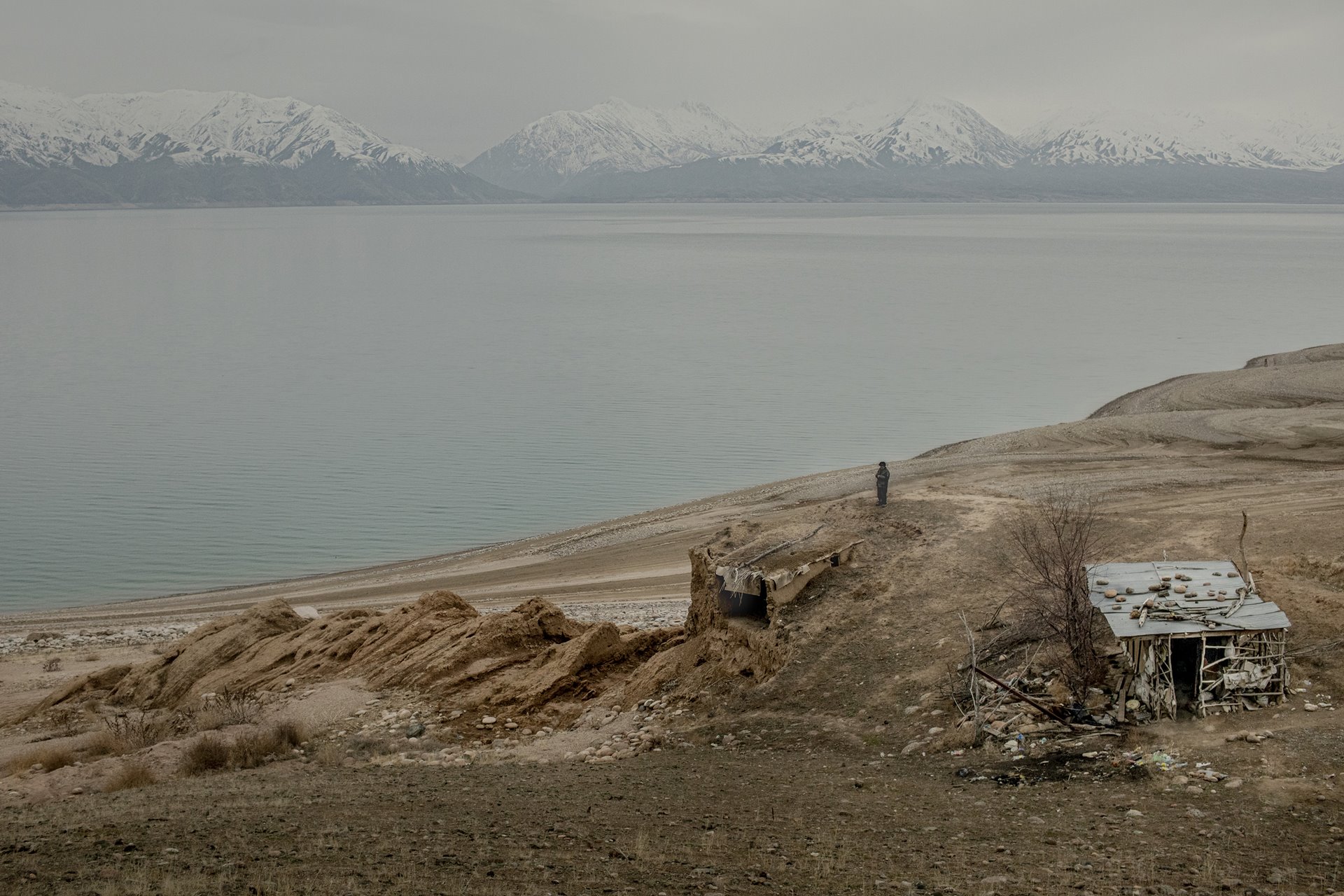Nurislam Gainutdinov (72) stands near his home beside the Toktogul Reservoir, in Kyrgyzstan. Gainutdinov has had to move his house in response to fluctuating water levels in the reservoir.
Access to water is one of the most contentious local issues in Central Asia today. Four landlocked countries compete over the water supplies they share – a situation intensified by the climate crisis.
For decades, interdependence between Tajikistan and Kyrgyzstan, upstream on the Syr Darya and Amu Darya rivers, and Uzbekistan and Kazakhstan downstream, encouraged peaceful interaction over use of this resource – but drought, conflicting needs, and water mismanagement are disrupting this long-standing cooperation. Post-Soviet independence of the four countries, the subsequent growth of national identities, and the rise of privatized industries all contribute further to this imbalance.
In the past, upstream countries, dependent on a supply of hydroelectric power that was not sufficient to meet winter needs, received fossil-fuel energy from downstream countries at prices subsidized by the Soviet government. This arrangement allowed upstream countries to conserve water in winter, which they would release in summer when it was needed for irrigation in important agricultural areas downstream. The breakdown of the Soviet subsidy system has led upstream countries to release more water to generate power in winter, which results in downstream flooding and less water for summer irrigation. Downstream countries have resisted Kyrgyzstan’s attempts to extract payment for water.
Recent intense droughts have aggravated the situation. In February 2022, the Toktogul Reservoir in Kyrgyzstan, for example, contained just 8.6 billion cubic meters of water (bcm), well below its capacity of 19.5 bcm, and nearing the 5.5 bcm level at which the dam is considered ‘dead’ and incapable of producing hydroelectric power. Furthermore, glaciers in Kyrgyzstan and Tajikistan, a precious water resource, are currently receding. Although this temporarily increases water flow, it is likely to worsen the situation in future.
The photographer documented the resilience of people living in this region, who have been dealing with issues of water management for many years. She said: “Water intertwines with their lives. People’s lives are also changing because the climate is changing, and they have to adapt to that, too. I wanted to capture this powerful spirit. One of the reasons I'm happy that this project was a winner is that it means I can share the story with a wider audience. Stories from Central Asia are not covered enough.”

